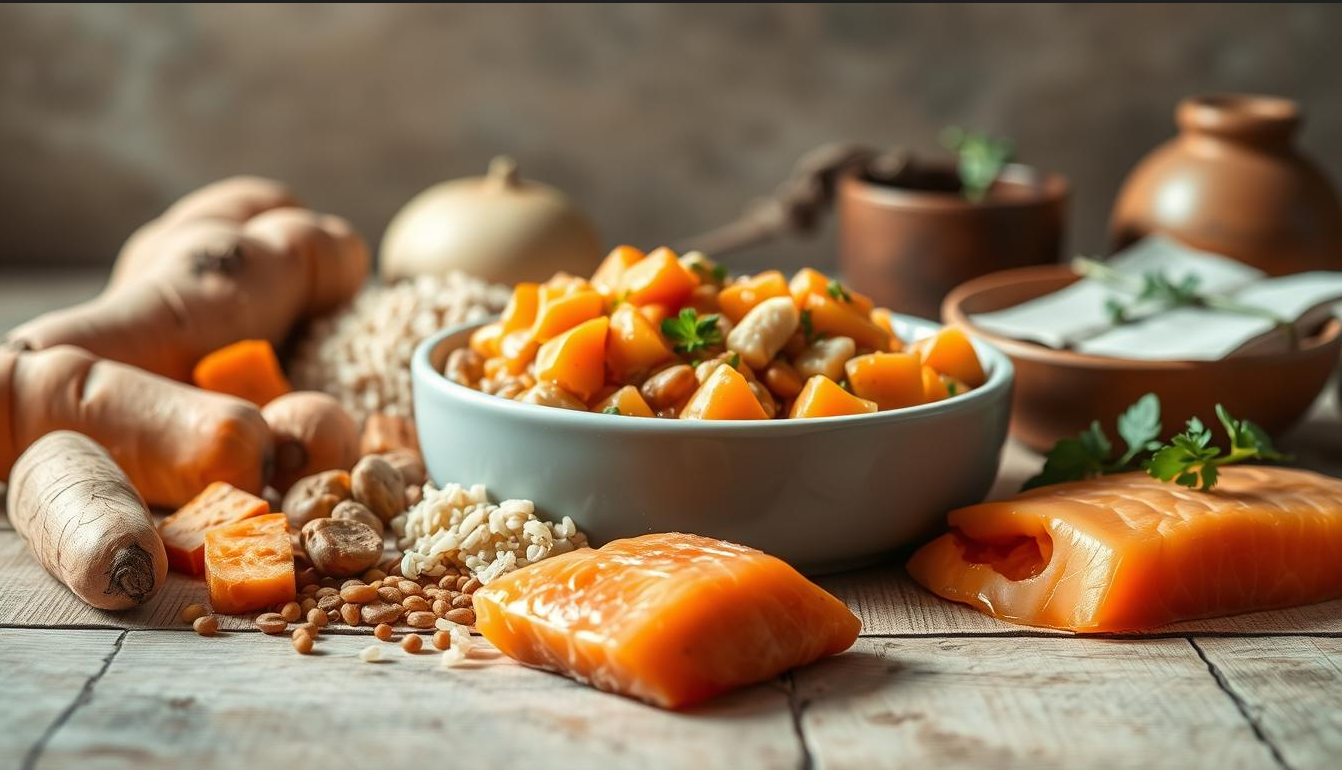The debate on Raw Diet for Pets has significantly evolved over the past decade, with more pet owners opting for raw diets over traditional kibble. This shift is crucial for informed decisions about your pet’s health, regardless of experience or newcomers.
The Basics: What Are Raw and Kibble Diets?
Before diving into the debate, it’s important to define what we mean by “raw diets” and “kibble diets.”
Kibble Diets: Kibble is the most common pet food found in the U.S. It’s dry, shelf-stable, and comes in bags or boxes. The manufacturing process often includes high heat, which can strip away nutrients, though many brands fortify their kibble with vitamins and minerals.

Raw Diets: A raw diet typically consists of raw meat, bones, organs, and sometimes fresh vegetables and fruits. This feeding style aims to mimic the natural diet of dogs and cats in the wild. Raw feeding enthusiasts argue that it’s a more biologically appropriate way to nourish pets, leading to improved health and vitality.
Why Are More U.S. Pet Owners Choosing Raw Diet for Pets?
1. Improved Health Benefits
One of the most compelling reasons pet owners make the switch to raw diets is the noticeable improvement in their pet’s health. Advocates report benefits such as:
Healthier Skin and Shinier Coats:
Raw diets often contain higher levels of omega-3 fatty acids, which contribute to reduced itchiness, flakiness, and dandruff. The result? Softer, shinier fur.
Better Digestion:
Many kibble brands include fillers like corn, soy, or wheat, which some pets struggle to digest. Raw diets—being grain-free and made from fresh ingredients—are often easier on sensitive stomachs.
Stronger Teeth and Fresher Breath:
Chewing raw bones can act as a natural toothbrush for dogs and cats, removing plaque buildup and keeping their mouths healthier.
Increased Energy Levels:
Many pet owners notice a boost in their pet’s energy levels after switching to raw food. This is often attributed to the absence of processed fillers and artificial additives.
2. The “Ancestral Diet” Argument
Pet owners adopt an “ancestral diet” philosophy, incorporating wild ancestors’ diets for pets, aiming for a natural and healthy diet, similar to wolves and wild felines.
3. Concerns Over Commercial Kibble
Recalls and controversies surrounding commercial pet food have left many U.S. pet owners questioning the safety and quality of kibble. Concerns include:
Artificial Additives:
Some kibble brands rely on artificial colors, flavors, and preservatives to enhance shelf life and appeal.
Low-Quality Ingredients:
Reports of kibble containing by-products, fillers, and even contaminated materials have made headlines, alarming pet parents.
Recalls:
High-profile recalls due to contamination or nutritional deficiencies have eroded trust in mass-produced pet foods.
4. Customization and Control
Raw Diet for Pets gives you full control over what goes into your pet’s bowl. Customize your pet’s diet by selecting specific proteins, adding fiber-rich vegetables, and adjusting meals to meet their unique needs, such as avoiding trigger ingredients in kibble for pets with allergies or food sensitivities.
Common Concerns About Raw Diet for Pets
While the benefits of raw diets are appealing, it’s not without its challenges. Here are some concerns and how to address them:
1. Bacterial Contamination
Handling raw meat always carries a risk of bacterial contamination. To minimize this risk:
- Use high-quality, human-grade meat from trusted sources.
- Store raw food in airtight containers and keep it frozen until ready to use.
- Practice good hygiene, like washing your hands and cleaning feeding bowls thoroughly.
2. Balancing Nutrients
Unlike kibble, which is often formulated to meet Association of American Feed Control Officials (AAFCO) standards, raw diets require careful planning to ensure nutritional balance. Over time, imbalanced diets can lead to deficiencies or excesses in critical nutrients.
Solutions include consulting with a veterinary nutritionist or using pre-packaged raw food from reputable companies that design meals to meet AAFCO guidelines.
3. Cost
Raw Diet for Pets can be more expensive than kibble, especially if you’re sourcing organic, grass-fed, or free-range meats. However, many pet owners find ways to cut costs, such as:
- Buying meat in bulk from local farmers or butchers.
- Preparing meals at home instead of purchasing pre-packaged raw food.
- Feeding raw as a supplement to kibble rather than a full-time diet.
4. Time and Effort
Unlike scooping kibble into a bowl, raw feeding requires meal prep, storage, and cleanup. For busy pet parents, pre-packaged raw food or subscription-based raw delivery services can offer a more convenient solution.
Transitioning From Kibble to Raw
Switching your pet’s diet isn’t something to do overnight. A gradual transition is crucial to avoid digestive upset. Here’s a step-by-step guide:
1. Start Slow:
Begin by mixing a small amount of raw food with your pet’s kibble, gradually increasing the raw portion over 7-10 days.
2. Monitor Digestive Health:
Watch for signs of digestive distress, like diarrhea or vomiting, and adjust the transition speed as needed.
3. Choose a Single Protein Source:
Start with a single protein, like chicken or beef, before introducing variety. This helps you identify any potential allergies or sensitivities.
4. Hydration Is Key:
Ensure your pet has access to plenty of fresh water, especially if they’re used to the higher moisture content of raw food.
Busting Common Myths About Raw Diet for Pets
Myth 1: Raw Diets Are Dangerous Because of Bacteria
Reality: While bacteria are a concern, proper handling and hygiene can mitigate this risk. Plus, pets’ stomachs are more acidic than ours, making them less susceptible to foodborne illnesses.
Myth 2: Raw Diets Are Too Expensive
Reality: While raw feeding can be pricey, there are cost-effective ways to make it work. Bulk buying and meal prep can significantly reduce expenses.
Myth 3: Bones in Raw Diets Are Unsafe
Reality: Cooked bones are dangerous because they splinter, but raw bones are softer and generally safe. Supervise your pet during mealtime to ensure safe chewing.
Myth 4: Kibble Is “Complete and Balanced” So It’s Better
Reality: While many kibble brands meet minimum nutritional requirements, they often lack the fresh, bioavailable nutrients found in raw diets.
The Rise of Pre-Packaged Raw Pet Food
Raw Diet for Pets food is a game-changer for pet owners interested in raw feeding but intimidated by meal prep. Companies like Primal, Stella & Chewy’s, and Darwin’s Natural Pet Products offer frozen or freeze-dried raw meals that are convenient, nutritionally balanced, and easy to serve.
These options often come in patties, nuggets, or bite-sized portions that you can thaw as needed, eliminating much of the guesswork involved in preparing raw meals at home.
The Future of Pet Nutrition
As more U.S. pet owners become invested in their pets’ well-being, raw diets are likely to continue growing in popularity. Innovations in raw food storage, formulation, and delivery services are making this feeding style more accessible to the average pet parent.
Ultimately, the choice between raw and kibble depends on your lifestyle, budget, and your pet’s unique needs. By doing your research and consulting with a veterinarian, you can make the best decision for your furry family member.

